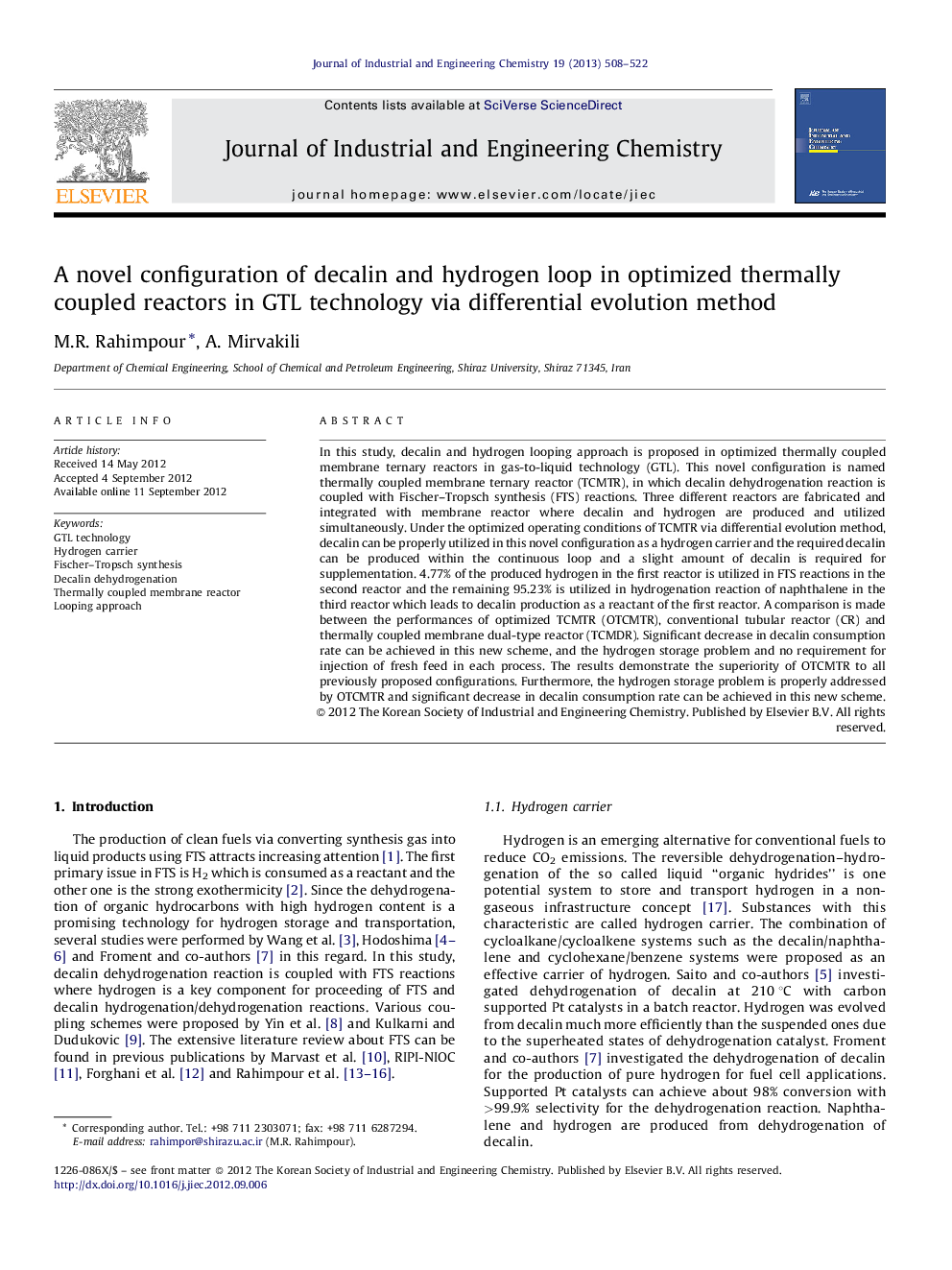| Article ID | Journal | Published Year | Pages | File Type |
|---|---|---|---|---|
| 228038 | Journal of Industrial and Engineering Chemistry | 2013 | 15 Pages |
In this study, decalin and hydrogen looping approach is proposed in optimized thermally coupled membrane ternary reactors in gas-to-liquid technology (GTL). This novel configuration is named thermally coupled membrane ternary reactor (TCMTR), in which decalin dehydrogenation reaction is coupled with Fischer–Tropsch synthesis (FTS) reactions. Three different reactors are fabricated and integrated with membrane reactor where decalin and hydrogen are produced and utilized simultaneously. Under the optimized operating conditions of TCMTR via differential evolution method, decalin can be properly utilized in this novel configuration as a hydrogen carrier and the required decalin can be produced within the continuous loop and a slight amount of decalin is required for supplementation. 4.77% of the produced hydrogen in the first reactor is utilized in FTS reactions in the second reactor and the remaining 95.23% is utilized in hydrogenation reaction of naphthalene in the third reactor which leads to decalin production as a reactant of the first reactor. A comparison is made between the performances of optimized TCMTR (OTCMTR), conventional tubular reactor (CR) and thermally coupled membrane dual-type reactor (TCMDR). Significant decrease in decalin consumption rate can be achieved in this new scheme, and the hydrogen storage problem and no requirement for injection of fresh feed in each process. The results demonstrate the superiority of OTCMTR to all previously proposed configurations. Furthermore, the hydrogen storage problem is properly addressed by OTCMTR and significant decrease in decalin consumption rate can be achieved in this new scheme.
